How many times a day should a cat be fed and what does it depend on?
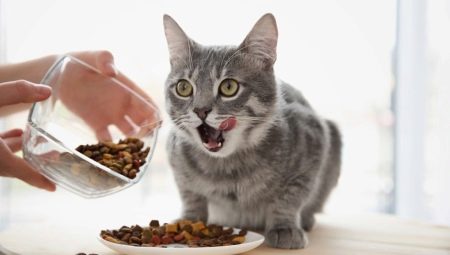
Sometimes cat owners do not think about how to feed their pets properly and usually do not adhere to any regimen. But a properly organized diet is not only a guarantee of the health of the animal, but also a necessary condition for its activity and emotional mood.

Factors That Affect Eating Frequency
A well-organized feeding schedule is essential. A well-fed animal, accustomed to receive food at a certain time, does not require additional feeding in the interval between feedings, the cat is calm and happy. The peculiarities of proper feeding are to observe rules such as:
- it is worth feeding at the same time;
- the time of eating should be limited - it usually takes a cat about 20 minutes to finally get full; the feeder must be removed if the cat has not eaten all the food;
- a one-time amount of food should be fixed - with two meals a day, the daily rate must be divided in half.
How often cats are fed depends on many factors. One of them is the daily routine of the owner himself. It is also necessary to adjust the feeding of the pet for it. There are several important factors to consider.
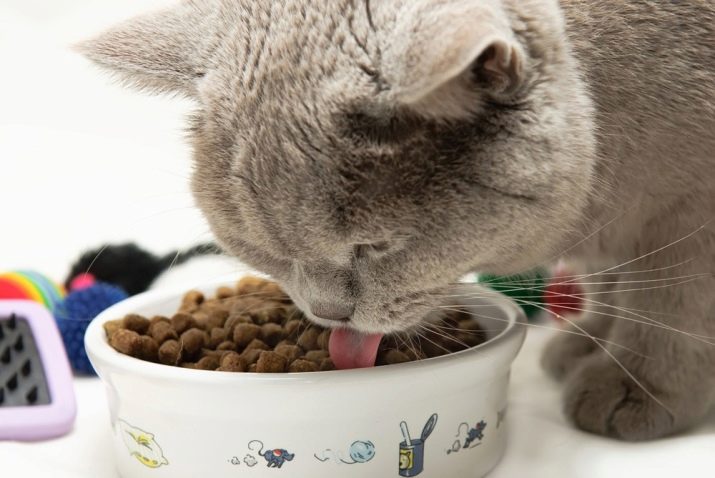
Age
Feeding frequency for cats varies by age. Feeding an adult pet is fundamentally different from feeding kittens. At an early and young age, when the animal's body is actively growing and developing, it needs to be fed much more often. The need for food intake in kittens in the first days of life is very large - approximately 8 times a day the cat feeds them. Monthly kittens eat a little and less often, but still quite often - up to 6 times a day. Gradually, the number of meals decreases.
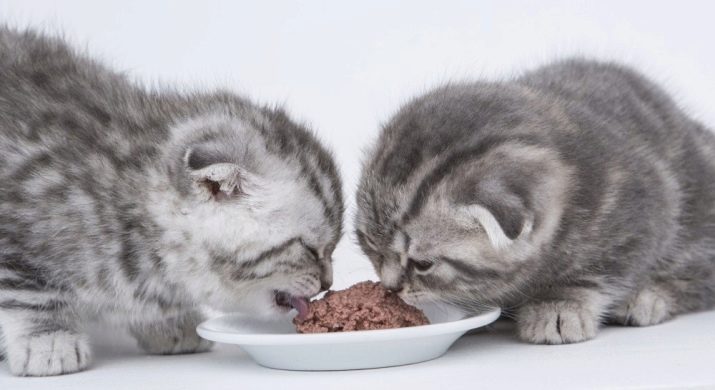
At three months of age and up to about 6 months, kittens need to be fed 4–5 times. Cats older and up to one year of age are limited to three or four feedings daily.
A pet from 1 to 10 years old is considered an adult. Cats over 1 year old should be fed two meals a day and preferably fed in the morning and evening. From the age of 7 and older, the aging process gradually begins, which manifests itself in a slowdown in metabolism and in dental problems. Cats over 10 years old are already considered old.
It is recommended to feed an old pet with food that is easily digestible, and the frequency of feeding increases up to 3-4 times.
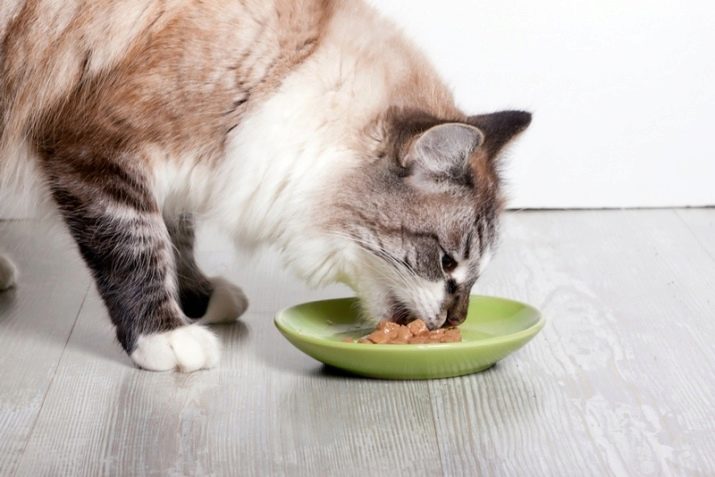
Ailments and diseases
Feeding frequency also depends on the cat's overall well-being. In the presence of any disease in animals, there is often a decrease or complete lack of appetite. Sometimes a sick animal even has to be force-fed. And only after complete recovery does the cat again have an appetite and can be transferred to the usual feeding schedule.
The correct diet and amount of food for a sick pet should be prescribed by a veterinarian. Most often, an individual diet is prescribed in accordance with the disease. Usually a sick cat is fed often - about 3-4 times. But the one-time meals are smaller. If the health condition of the pet allows, then you can leave two meals a day.
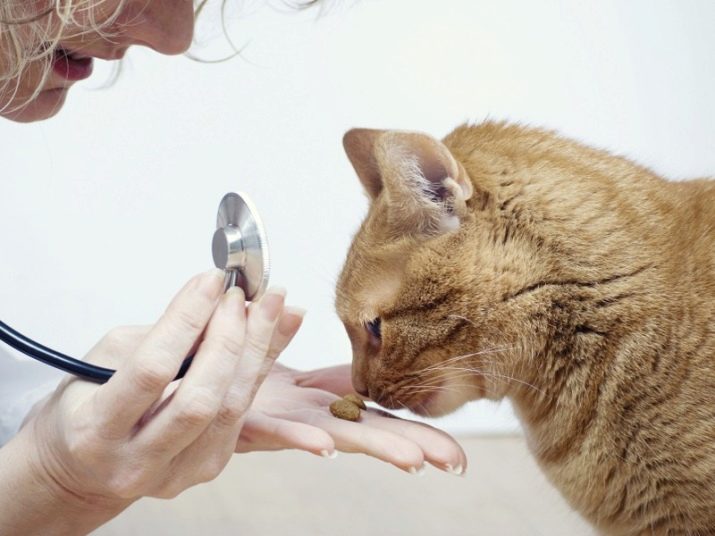
Features of feeding sick cats depend on their diseases. Feeding of cats with diabetes mellitus and taking insulin should be associated with the time when insulin is injected. You need to feed such a cat from 4 to 6 times and in small doses. Frequent feeding in small doses is also recommended for cats who have problems digesting and assimilating food. If your pet is allergic to food, it doesn't matter how often you feed. It is important not to feed the food you are allergic to.
Obesity is also a disease. To lose weight in your cat, you need to feed it often and in small doses. It is necessary to exclude foods rich in carbohydrates, increase the protein content and increase the activity of the pet through games. A sick kitten should be fed frequently, about every 2 hours, and in small portions. With this regime, the daily feed rate must be equally divided between all feedings.
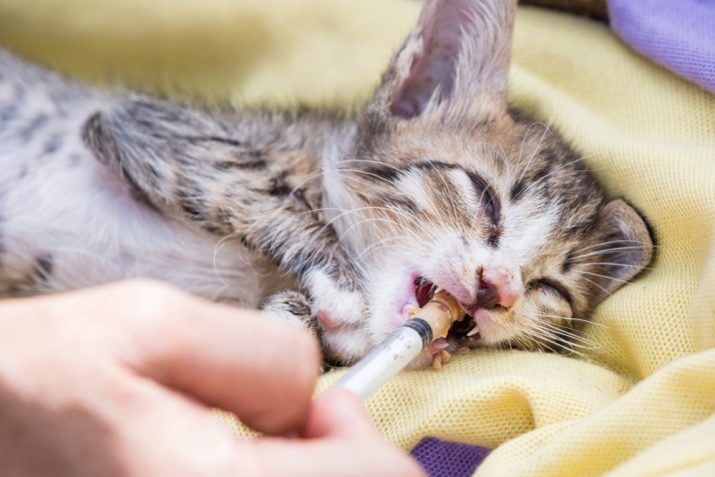
Important! You should strictly adhere to the instructions of the veterinarian, feed with the food that he prescribed, and adhere to the recommended frequency of meals.
Activity level
The activity of cats depends, first of all, on their age and changes as the animal grows up. The more active and mobile the pet is, the more energy it spends. Therefore, small kittens need to be fed more often when compared with adults. Besides, neutered cats and neutered cats are more passive and use less energy. Therefore, they should receive fewer calories from food, but this does not affect the frequency of its intake. It remains the same, but at the same time the daily rate is reduced.
Cats living in a private house have the opportunity to go out and lead a very active life. Such a pet can be fed once by placing the entire daily rate in the feeder at once. It is not recommended to feed passive pets like this; it is better to stick to the traditional two meals a day.

Animal gender
It is believed that cats require more food than cats. This is due to the fact that the cat has a higher need for nutrients, so they are advised to slightly increase the daily allowance. As for the frequency of feeding, it is no different from the meal plan of cats, that is 2 times a day.
It should also be noted that cats often cannot control their need for food. Such voracious pets should be limited in the amount of food.

Pregnancy
The nutrition of the cat during the gestation period of kittens also has some differences. In the first half of gestation, the cat's appetite practically remains the same. During the second half, she already needs more feed. A pregnant cat is fed more often, about 4 or 5 times a day, and the daily food intake is gradually increased.
Besides, food should be high in vitamins and high in calories. Before the very birth, the animal may not eat at all. This is completely natural. At the end of labor, the cat may only ask for food after 3 or 4 hours. During the feeding of newborn kittens, the cat continues to be fed fractionally - from 4 to 6 times a day, but the portions should be small.

Breed
Basically, cats need to eat 2 times a day. However, some cat breeds require a slightly different diet. So, large individuals, for example, Maine Coon, need more food. They can be fed not 2, but 3 times by adding one more feeding during the day.... And also three meals a day are recommended for Siamese and shorthair cats of Asian breeds, Persian and Munchkin cats.
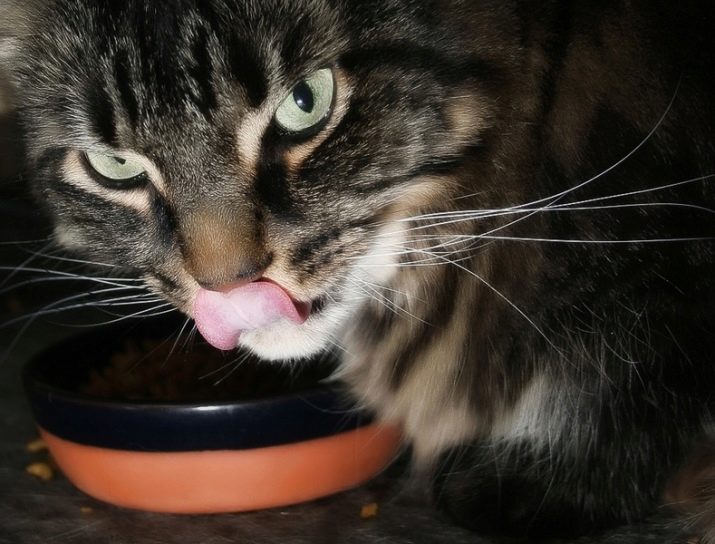
Feeding frequency rates
There are other important factors to keep in mind to determine how many times a cat should be fed per day. The frequency of feeding also depends on the calorie content of the food. In order not to overfeed the animal and not to leave it hungry, you need to know how many calories are in the daily feed rate and how many of them the pet needs per day.
The best option is a properly balanced diet that will fully satisfy your cat's appetite when fed twice a day. It is preferable to give the cat a smaller amount of food, but with a higher calorie content.
The required daily caloric intake for cats is determined at the rate of 70 kcal per 1 kilogram of cat's weight.
Calorie content affects the daily feed volume and can range from 30 to 60 grams also per 1 kilogram of pet's weight. So, a healthy and adult cat weighing about 5 kg will need about 350 kcal and about 250 g of food per day. Naturally, the lower the calorie content of the feed, the more it will be required, you will have to feed the pet more often. Therefore, it is necessary to choose high quality food that has a high content of protein components and useful additives. There are several nutritional options for your pet.
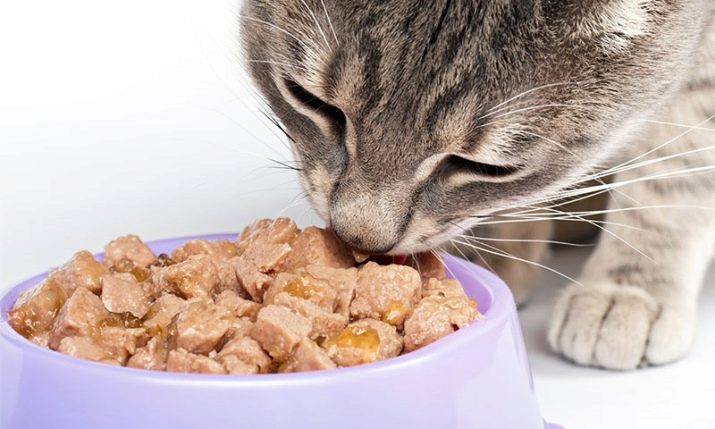
Dry food
Using dry food for domestic cats has the following benefits:
- if necessary, you can feed the animal with such food not twice, but once, by placing the entire daily norm in the feeder, which will allow the pet to independently regulate nutrition and take food at will;
- it is quite easy and simple to determine the size of portions and the total amount of dry food, since they are always detailed on the package;
- ready-made mixtures cannot deteriorate and harm the pet;
- such food is properly balanced and includes all nutrients, trace elements and vitamins that an animal requires;
- a wide variety of species allows you to choose exactly the food that your pet needs; there are food for neutered and neutered animals, for kittens of different ages, young individuals and other options;
- feeding with dry food is also convenient for the owner of the cat - there is no need to make up a daily menu;
- eating such food and chewing on the pads, the animal cleans its teeth from plaque and stone.
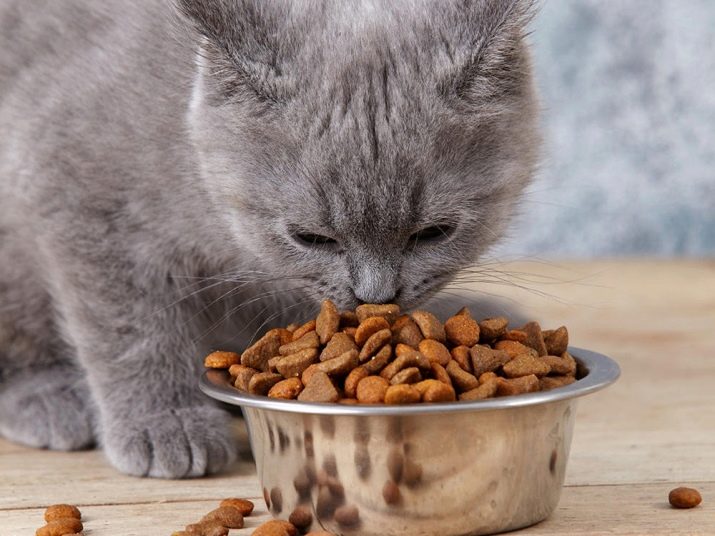
Of course, this food has its drawbacks. First of all, this is its cost, especially for high quality premium feed. At the same time, the animal very quickly gets used to it and subsequently, if the need arises, it is difficult to transfer it to another diet.In addition, there is a slightly high salt content in dry food, especially in the cheaper varieties. Animals that eat dry food need to drink plenty of fluids, so fresh water should always be available and available to the pet.
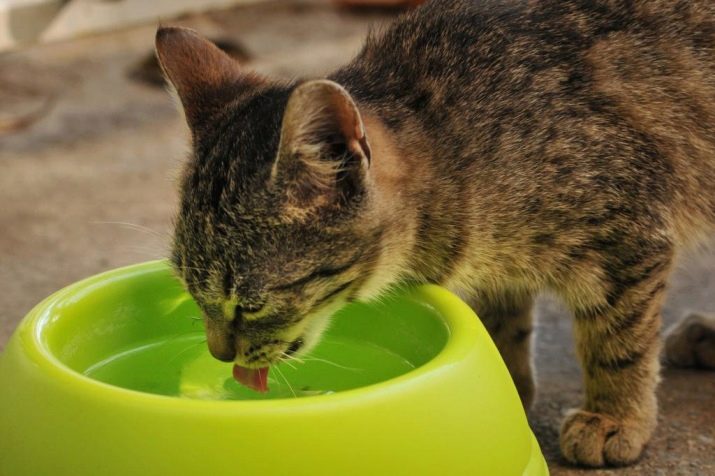
Wet food
There are also ready-made wet food. They can differ in varying degrees of density and density. They are subdivided into stews, pieces of meat in different sauces, pates. They can be used as a supplement to the main feed. However, it must be remembered that they contain various preservatives that can cause digestive disturbances in an animal.
The best option and more nutritious food is canned food for animals. They are formulated with meat ingredients with added cereals, minerals and vitamins in properly balanced proportions. Canned food in the form of pates is recommended even for kittens, old and sick cats. Dry food and wet food can be combined. In this case, it is important to observe such a ratio as: dry food - 70%, wet food - 30%
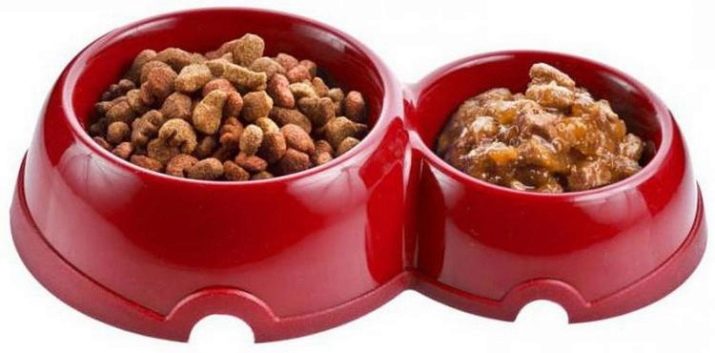
The advantages of wet food are as follows:
- a large assortment in terms of taste: with the taste of beef, chicken, rabbit and many others;
- in consistency they are very similar to natural food; in high-quality types, meat fibers can be distinguished with exactly the taste that is indicated on the package;
- calorie content is easily controlled and the daily feed rate is indicated.
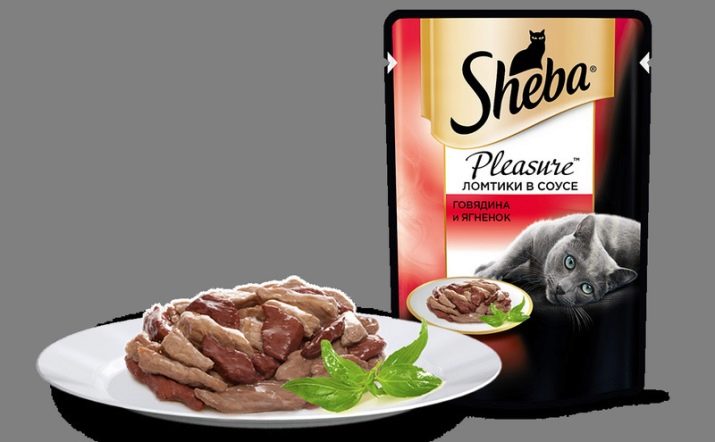
Natural food
The main problems of natural nutrition are the difficulty of determining the energy content and the preparation of a properly balanced food that would include all the necessary elements. Meat is the main and largest component of natural cat food and is supplemented with a small amount of offal.
The advantage of natural food is that only natural products are used without preservatives and harmful additives. And the disadvantages are the need to waste time on cooking and a short shelf life.
Lean meats (beef, veal, poultry, lamb) can be fed to cats every day. By-products (liver, kidneys, heart) are given 1 or 2 times every 7 days in small quantities.
Meat can be given both boiled and raw, but after pouring boiling water over it. Cartilages are also very useful for cats.
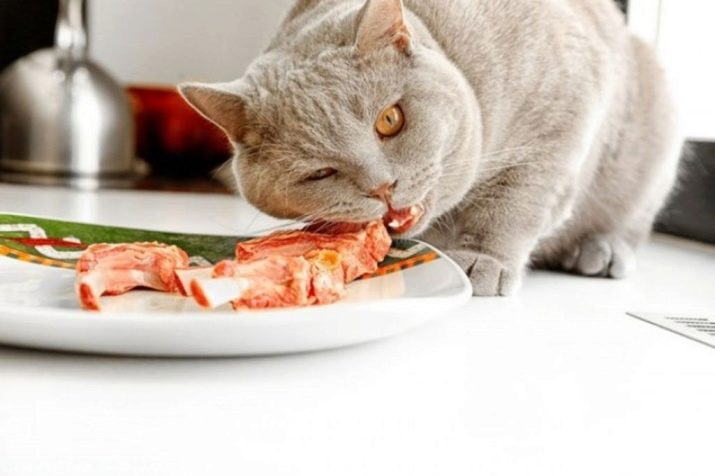
It is recommended to feed your pet with boiled sea fish once a week. More frequent feeding of fish can disrupt the magnesium-phosphorus balance in the animal and lead to the occurrence of diseases. Pets also need boiled vegetables or raw. The necessary additives for a complete diet are various cereals - buckwheat, oatmeal, rice, which include vegetables and meat ingredients. The diet should also include fermented milk products - cottage cheese, kefir, fermented baked milk, natural yogurt, as well as cheese.
The daily amount of food for kittens up to 9 months of age is 10% of their weight, and for kittens older than 9 months and for adults, respectively, 5%... So, for a cat weighing about 4 kg per day, 200 g of food will be required, including meat (it should be 50%), fermented milk products, cereals and other components. With such a diet, cats, starting from 1 year old, need to be given vitamin complexes.

How to understand that the animal is well fed?
You can tell if a cat is full by its behavior. Cats usually prefer to rest after eating. A pet that gets enough food is active, energetic and cheerful. But the weight of the animal must be monitored, since not only excess weight is dangerous, but also too small. Adult cats weigh an average of 2.5–5 kg. From time to time you need to control the weight of the pet. With its excess or deficiency, it is required to respectively reduce or increase the calorie content of the portion.
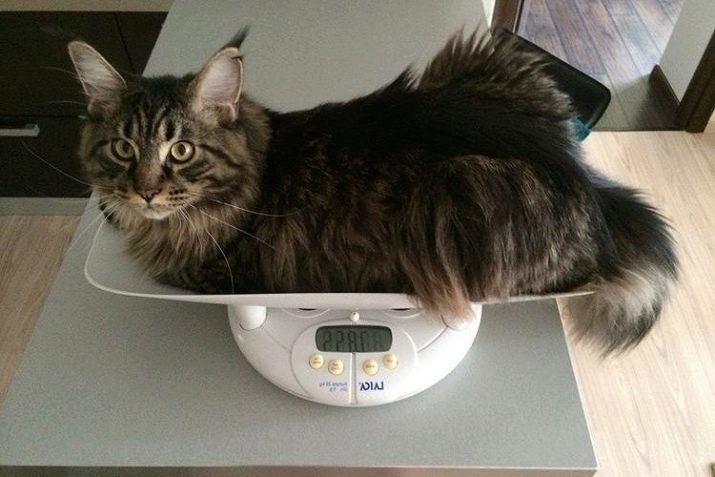
Important! Another way to determine if the pets are eating enough is to feel the ribs of the animal. With a lack of weight in a cat, the ribs protrude strongly, and in an overweight animal, they are not palpable.
Common mistakes
Cat owners often make mistakes when organizing their meals, such as:
- when preparing natural food, the owners add salt; this cannot be done, since cats are prone to urolithiasis;
- often pets are given dry food for other purposes: for example, sterilized cats are offered regular food or vice versa;
- table feeding is also unacceptable, since many dishes are not allowed for cats, including pork, fried spicy meat, smoked meats and sweet foods;
- it is also impossible to combine dry and natural food, since the peculiarity of the cat's stomach does not allow you to quickly tune in to another type of food;
- the transition from one type of feed to another should be carried out gradually, over about two weeks.

For how many times a day to feed a cat, see the next video.
































